|

DECEMBER
8 2021 - Japanese utility companies have partnered with the Japan International Cooperation Agency (JICA) to develop a roadmap to accelerate the decarbonisation of the power sector in Indonesia.
The Tokyo Electric Power Company Inc (TEPCO), JERA, TEPCO Power Grid, and Tokyo Electric Power Services Company (TEPSCO) have agreed to co-conduct the Data Collection Survey on Power Sector in Indonesia for Decarbonisation.
The four companies have established a joint venture to deliver the project from November 2021 through March 2022. The project includes gathering and analysing data on Singapore’s current energy market trends and future outlook.
JICA wants to help Indonesia to achieve its goal of becoming carbon neutral before 2060 as pledged by the government in July 2021 during the United Nations Framework Convention on Climate Change (UNFCCC). Today Indonesia is the largest energy consumer in the Association of Southeast Asian Nations (ASEAN), accounting for nearly 40% of ASEAN’s total energy use.
The agency will leverage roadmaps developed by the four companies to help Indonesia reduce its reliance on coal-fired energy generation and retire conventional energy generation. The roadmaps are expected to help Indonesia achieve its target of 23% of its total energy produced from renewables by 2025 and to curb the construction of new coal power plants by 2030.
Although electrification has been steadily growing in Indonesia, energy demand is also increasing, risking the country’s transition to smart energy solutions and decarbonisation, according to the statement.
As such, recommendations set to be provided by the four companies are expected to play a critical role in helping Indonesia to reduce its greenhouse gas emissions from power generation whilst ensuring energy security.
TEPCO Power Grid will act as project supervisor and will conduct a study on power development and demand assumptions whilst TEPCO will study energy policies, regulations and financial and economic assumptions for decarbonisation.
TEPCO will be responsible for project administration and operational support.
JERA will act as assistant project supervisor and will conduct studies on low-carbon and decarbonised thermal power solutions.
TEPSCO will study the transmission network and how it can be optimized to transport an increasing amount of renewables.
JICA will leverage the roadmaps developed to assist Indonesia Under the Asia Energy Transition Initiative (“AETI”) announced by the government of Japan in May 2021.
JICA will also work with the four companies to implement the roadmaps they would have developed.
TEPCO Power Grid will provide its experience in building and operating transmission and distribution networks, TEPCO its expertise in institutional and financial aspects, JERA its experience in developing net-zero roadmaps for overseas businesses, and TEPSCO its energy consulting and advanced technical services across Africa and Asia.
The development follows the Indonesian government signing an agreement with the International Renewable Energy Agency (IRENA) during the recent COP26 summit in Glasgow, to leverage the agency’s expertise and network to speed up its energy transition.
Commenting on the agreement, Indonesia’s Energy Minister Mr. Arifin Tasrif, said: “Indonesia has committed to reducing greenhouse gas emissions 29% by 2030 and has set a more ambitious target of net-zero emission by 2060 or sooner with international support.
“However, there is a lot to be done domestically in terms of policy, technology, and financial flows. We need support from other countries and international organisations with expertise like IRENA. We look forward to working closely with IRENA to prepare Indonesia’s energy transition.”
A strange situation exists where Japanese utilities have agreed
to work together to help decarbonise Indonesian electrification,
while still building coal fired stations at home. It is one of
the most perverse contradictions imaginable on the global
warming stage, but one that may also count as mitigation, in
helping other nations not to build coal electricity
stations, and make the same miscalculations as Japan, that might
tie Indonesia to fossil fuels for the next 30-40 years. Well
done (in advance) to Japan International Cooperation Agency (JICA).
It also means that Indonesia under Joko Widodo, is taking COP26
commitments seriously, in reaching out. Provided that they are
able to follow through with greener roadmaps to net zero
emissions.

HYDROGEN
RACE - The countries that crack the formula for a
sustainable hydrogen infrastructure, are likely to be more
competitive in terms of international trade. Also able to hold
their heads up high as leaders of clean tech. Which in the
automotive world they already are, except for exports of a
workable infrastructure as smarter
replacements to existing fossil fuel service stations. China and
Europe are investing at different levels, but probably not as
much percentage wise of GDP as Japan. That makes Japan a bit of
a climate hero in the making if they succeed. Nice one Mr
Kishida. But please cut out the coal as soon as possible. Fumio
Kishida is the successor to Yoshihide
Suga.
BBC 6 DECEMBER 2021 - Climate change: Is ‘blue hydrogen’ Japan’s answer to coal?
It's a glorious autumn afternoon and I'm standing on a hillside looking out over Tokyo Bay. Beside me is Takao Saiki, a usually mild-mannered gentleman in his 70s.
But today Saiki-San is angry. "It's a total joke," he says, in perfect English. "Just ridiculous!"
The cause of his distress is a giant construction site blocking our view across the bay - a 1.3-gigawatt coal-fired power station in the making.
"I don't understand why we still have to burn coal to generate electricity," says Saiki-San's friend, Rikuro Suzuki. "This plant alone will emit more than seven million tonnes of carbon dioxide every year!"
Suzuki-San's point is a good one. Shouldn't Japan be cutting its
coal consumption, not increasing it, at a time of great concern about coal's impact on the climate?
So why the coal? The answer is the 2011 Fukushima nuclear disaster.
In 2010 about one third of Japan's electricity came from nuclear
power, and there were plans to build a lot more. But then the 2011 disaster hit, and all Japan's nuclear power plants were shut down. Ten years later most remain closed - and there is a lot of resistance to restarting them.
In their place Japan's gas-fired power stations have been doing a lot of overtime. But, as Britain has found out recently, natural gas is expensive.
So, the Japanese government decided to build 22 new coal-fired power stations, to run on cheap coal imported from
Australia. Economically it made sense. Environmentally, not so much. Japan is now under intense pressure to stop using coal.
Instead of closing the old coal plants and switching to renewables, Japan's answer is to switch to burning hydrogen or
ammonia.
"The investment made by electric power companies in coal-fired power plants would suddenly be useless without value in their balance sheet," says Prof Tomas Kaberger, an expert on energy policy at Chalmers University in Sweden.
"And it would create financial difficulties for electric power companies and then for banks and pension funds. And that is the challenge for Japan."
The plants can be quite easily converted to burning hydrogen or ammonia, neither of which produce any
carbon
dioxide. So this seems like a good solution.
But Japan's government has much bigger ambitions than that. It wants to be the world's first "hydrogen economy".
This is where the carmaker Toyota comes in.
It's another lovely sunny day and I'm in downtown Tokyo, at a shiny new hydrogen filling station. Standing on the forecourt is a sleek new
Toyota
Mirai. This is a big luxury car, about the size of a large Lexus.
I slip into the leather-clad cabin, press the "start" button and glide out on to the street. The car is extremely smooth, completely silent, and the only thing dribbling on to the road behind me is a bit of water.
The Mirai (which means future in Japanese) is Toyota's first zero-emissions electric car. Unlike other electric cars, the Mirai doesn't have a huge
battery under the floor. Instead, it has a fuel cell under the bonnet, and hydrogen tanks under the back seat. The hydrogen is passed through the
fuel
cell, where it's converted to electricity, which runs the electric motors. It's the same technology that was used to power the Apollo spacecraft on the Moon missions.
[Hydrogen (LH2) and Oxygen (LOX) for
rocket motors, so not quite the same, but we get what he means]
To many people this technology is an odd choice. It's more expensive and complicated than
batteries.
Elon Musk has called hydrogen cars "stupid".
Not true, says Hisashi Nakai, the head of Toyota's public affairs division. He says the company's vision for
fuel cells goes much further than just cars.
"I know people have different opinions," he tells me, "but the important thing is realising carbon neutrality. We need to think about how we can make the most out of fuel cell technology. We strongly believe in hydrogen as a powerful and important energy."
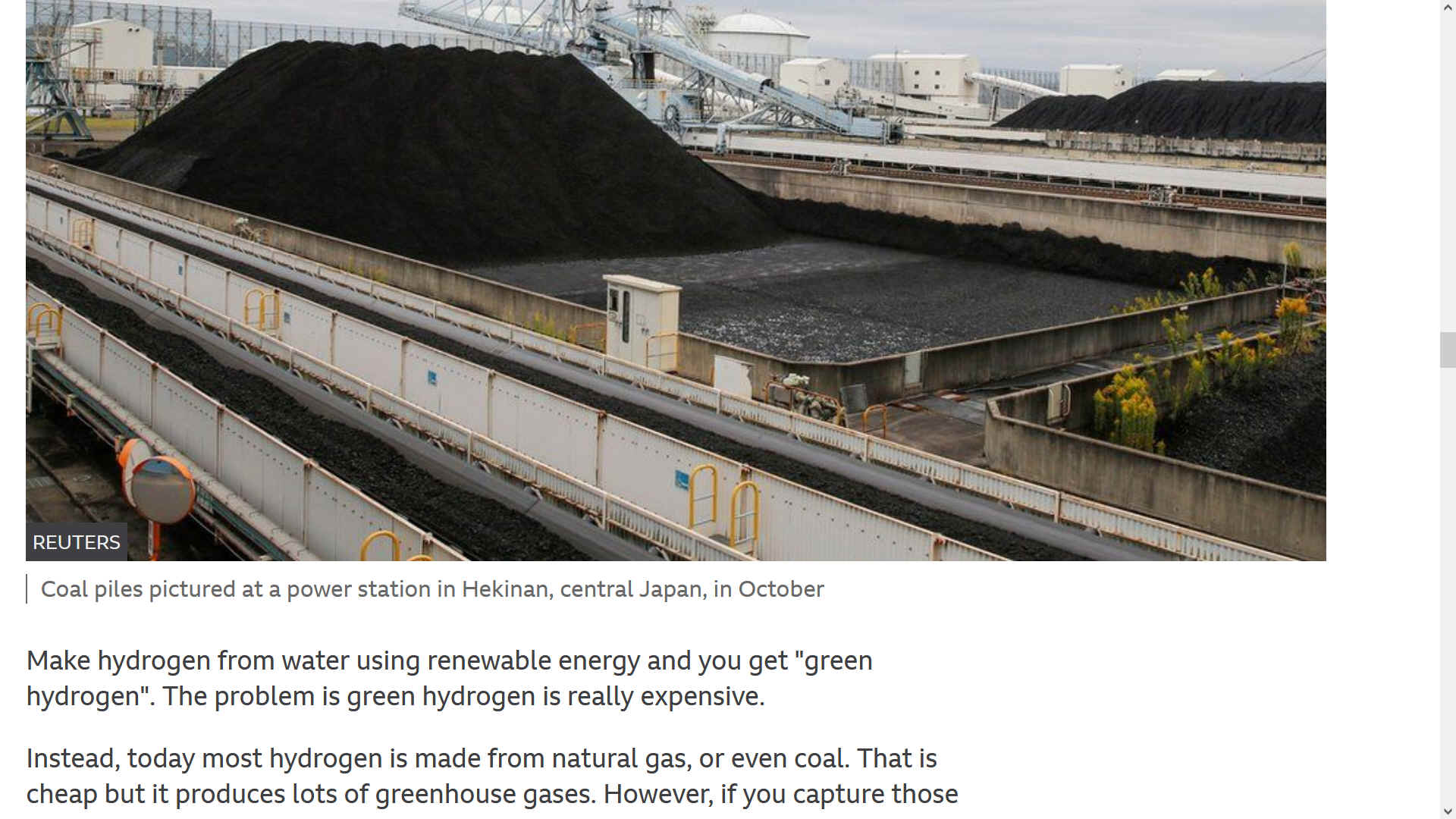
What Nakai-san says shows
Toyota is thinking of a future where hydrogen fuel cells are everywhere, in homes and offices and factories, as well as cars. And it wants to be at the forefront of this new hydrogen society.
This brings us to the final, and most important question. Where is the hydrogen to power Japan
zero carbon society going to come from?
The answer is "blue
hydrogen".
Make hydrogen from water using
renewable energy and you get
"green
hydrogen". The problem is green hydrogen is really expensive.
Instead, today most hydrogen is made from natural gas, or even coal. That is cheap but it produces lots of greenhouse gases. However, if you capture those greenhouse gases and bury them in the ground, you are allowed to call it
"blue
hydrogen".
This is exactly what Japan says it is going to do.
Earlier this year, Japan and Australia opened a joint project in the state of Victoria to turn a type of coal called lignite, or brown coal, into hydrogen. The hydrogen is then
liquified to minus 253C, then piped into a specially built
ship which carries it to Japan.
[No IMO
rules for such ships, only guidelines
for LNG]
What happens to the greenhouse gases produced at the site? Right now, they go straight up into the atmosphere. But Japan and Australia are
promising that, at some point in the future, they will begin capturing the greenhouse gas produced at the Latrobe Valley site and inject it into the
sea floor off the coast.

Climate change campaigners are horrified by this plan. They say the technology to capture and store greenhouse gases is unproven and it will lock Japan into digging up vast quantities of
brown coal for decades to come.
According to Prof Kaberger, the biggest hole in the plan is economic.
"Technically it's possible, but it will always be expensive," he says. "Using fossil fuels with carbon capture and storage will always be more expensive than using fossil fuels alone, and now in many parts of the world renewable
electricity is already cheaper than fossil fuels without carbon capture."
Prof Kaberger thinks the Japanese government chose blue hydrogen a decade ago when renewables were expensive, and they are now locked into a plan that no longer makes sense.
"Japanese companies need cheap electricity to be competitive and they need clean electricity to be internationally acceptable," he says. "That means they need renewable
electricity. Delaying this development will harm the Japanese
economy."
In the meantime, on the edge of Tokyo Bay, construction continues apace. The giant new coal-fired power station will go online in 2023. It is expected to run for at least 40 years.
"I am ashamed of Japan," says Hikari Matsumoto, a 21-year-old activist who has joined us to look out from the hillside.
"I'm so frustrated," she says. "In other countries young people are out on the street protesting, but Japanese people are so quiet. Our generation needs to voice its opinion."
By Rupert Wingfield-Hayes
JAPAN'S
HYDROGEN VISION
Japan sees hydrogen as a major way to decarbonize its economy while sustaining its industrial competitiveness. Hydrogen is among the 14 sectors identified under the
Green Growth Strategy Through Achieving Carbon Neutrality in 2050 (announced in December 2020) that will be key for Japan’s ability to meet the dual objectives. The Japanese government doubled down on hydrogen with an update to the green growth strategy, announced in June 2021, that adds specific action plans to priority sectors.
Per the triennial Strategic Energy Plan, to be adopted by the cabinet later this fall, hydrogen and ammonia will make up 1 percent of both the primary energy mix and the electricity supply mix in 2030 to be consistent with the country’s 46 percent greenhouse gas reduction target (against 2013 levels). Beyond its use in the electricity generation and transportation sectors, hydrogen is seen as key for decarbonizing industrial sectors, such as steelmaking and petrochemical production. In particular, Japan also has a technological edge in fuel cell technology. The country continues to invest in this technology and seeks to be a top global exporter.
Reducing the cost of hydrogen production is a major agenda. The work is underway to reduce the cost from about US$1 per cubic meter (Nm3) in 2017 to 30 cents/Nm3 by 2030 and about or below 20 cents/Nm3 by 2050.
While Japan sees reliance on hydrocarbon as inevitable in the short term, the country seeks for the long term to shift the source of hydrogen and fuel cells from fossil fuels like natural gas to renewable energy, including a growing volume of domestically sourced renewable energy.
BASIC HYDROGEN STRATEGY
In 2017, Japan issued the Basic Hydrogen Strategy, becoming the first country to adopt a national hydrogen framework. The national government has also issued several strategic documents covering technological and economic aspects, such as the Strategic Roadmap for Hydrogen and Fuel Cells (2014, 2016, 2019), and the green growth strategy.
Japan is focused on expanding its hydrogen market from two million tons per year today to three million tons per year by 2030 and 20 million tons per year by 2050; through scale, the country seeks to drive down the cost of hydrogen to about one-third of the current level by 2030. In March 2019, the Japanese government updated its Strategic Roadmap for Hydrogen and Fuel Cells (initially adopted in June 2014 and previously revised in 2016). The roadmap presented new targets on the specifications of basic technologies and cost breakdowns and defined measures that are needed to achieve these targets. For example, the mobility targets included 200,000 FCVs by 2025 and 800,000 by 2030, as well as 320 fueling stations by 2025 and 900 by 2030.
The development of hydrogen supply chains is a major agenda, and both the Japanese government and companies are undertaking various projects, including the development of maritime transport. For example, Japan’s Kawasaki Heavy Industries Ltd. launched the world’s first liquefied hydrogen vessel in 2019 and completed the world’s first liquefied hydrogen receiving terminal in Japan in 2020. While Japan is currently focused on fossil fuel–based hydrogen supply chains, the country is also planning to establish a manufacturing technology base by 2030 to produce hydrogen from domestic renewable sources.
Japan wants to keep its technology options open and is investing in all carriers (i.e., liquified, methylcyclohexane [MCH], ammonia, and methanation) due to different advantages and the belief that it is too early to ascertain their long-term viability.
The mid-century carbon neutrality pledge, announced in October 2020, has furthered policy discussion of the following steps:
* More closely examine hydrogen demand potential and cost competitiveness
* Examine infrastructure needs in a comprehensive, society-wide manner
Consider:
- whether to introduce support for hydrogen deployment in additional areas, such as petroleum refining
- how best to scale up the demand so as to reduce import costs
- whether to further focus on investing in the development of electrolyzer technology
- whether the scope of Japan’s resource diplomacy should expand to include growing ties with renewables-rich countries as potential suppliers of renewables-based hydrogen
- whether the Japanese government should support the export of hydrogen technology and products to other hydrogen user countries
The updated green growth strategy (June 2021) outlines future global market potential for hydrogen technologies and products in key sectors; identifies what needs to be overcome (mostly technical obstacles, but some regulatory); and provides timelines and numeric targets, such as units of deployed equipment (e.g., refueling stations) and end-use products (e.g., cars and residential fuel cells), as well as hydrogen volume used (e.g., steel making and electrolyzing).
The Japanese government provides robust funding for RDD&D. The Japanese fiscal year 2020 (April 2020–March 2021) government funding for hydrogen includes $247 million for clean energy vehicles (including, but not limited to, hydrogen and fuel cell), $40 million for residential fuel cells and fuel cell innovation, $52.5 million for innovative fuel cell R&D, $30 million for hydrogen supply infrastructure R&D, $120 million for FCV refueling stations, $141 million for the development of hydrogen supply chains using new sources abroad, and $15 million for hydrogen production, storage, and usage technology development. (The dollar values are based on the rate ¥100 = US$1.)
Furthermore, Japan’s national R&D agency, New Energy and Industrial Technology Development, is in the process of funding hydrogen projects that aim to establish a large-scale hydrogen supply chain ($2.7 billion allocated) and generate green hydrogen ($700 million allocated). The funding comes from the $20 billion Green Innovation Fund, which is one of the key policy tools under the green growth strategy, to support the mid-century carbon neutrality goal.
There is strong collaboration between the public and private sectors. Major areas where the public-private partnership is established include hydrogen use to decarbonize port operations via the Carbon Neutral Port initiative and expanded use of ammonia through the work of the Public-Private Fuel Ammonia Promotion Council. Moreover, a number of Japan’s leading energy companies, automakers, heavy industry companies, and financial entities have joined forces to promote hydrogen business and debate and recommend policy and regulatory conditions to realize a hydrogen economy (e.g., Japan Hydrogen Association, Clean Fuel Ammonia Association, and Japan H2 Mobility).
GEOGRAPHICAL INFRASTRUCTURE
Japan has the largest fleet of hydrogen refueling stations in the world, with over 130 stations across the nation—centered in four major cities—since the rollout in 2013. The Japanese government provides financial support for their construction and operation, but costs remain high.
Meanwhile, a major hydrogen research complex is based in Fukushima Prefecture. The Fukushima Hydrogen Energy Research Field (FH2R), which opened in March 2020, uses solar power generation (20-megawatt capacity) on a 0.18 km2 site and electricity from the grid to electrolyze water in a 10-megawatt-class hydrogen production unit—the largest in the world. The FH2R will also host various tests to identify the optimal operation control technologies that combine power grid demand response with hydrogen supply and demand response.
As Japan explores various technology options and hydrogen sources, Japanese companies are involved in hydrogen supply chain–related projects with countries around the world, including Australia, Brunei, Indonesia, Malaysia, Singapore, Saudi Arabia, Russia, the United Arab Emirates, and the United States. Some of the most notable undertakings are as follows:
Saudi Arabia: In September 2020, Japan received the world’s first shipment of fossil fuel–based ammonia from Saudi Arabia.
Brunei: There was a demonstration of shipping natural gas–based hydrogen from Brunei to Japan, in the form of MCH. In May 2020, Japan received the first shipment from Brunei and used the supply for domestic power generation.
Australia: The demonstration project on lignite-based liquefied hydrogen shipment from Australia to Japan is underway. The first shipment of Australian hydrogen to Japan
was expected late 2021.
POTENTIAL
CRIMINAL CHARGES
Countries
that thumb their noses at climate
change, such as to increase
harmful pollution, might have to face criminal prosecution via
the International Criminal Court, and the tenets of the Rome
Statute of 1998. Whereby it is a criminal offence to cause hurt
to another human, from your actions or failure to act to prevent
harm, including Geographical Genocide (Island
flooding and desert
displacement), by action or inaction.
Japan's
physical size and geographical location cannot supply sufficient
renewable energy for
their industrial objectives, meaning they have to import fuel.
In a world where neighbours help each other to achieve
equilibrium, there are countries more than willing to supply
genuine green hydrogen from sustainable sources, such as Norway.
Using coal as the source is counter-productive.
Mitigation
for Japan is that a number of their manufacturers, including
Honda and Kawasaki Heavy Industries, are championing hydrogen
vehicles and vessels, under their Basic Hydrogen Strategy from
2017 and long before. Why then would they undo all that hard
work with coal generating stations is amazing, presumably to
counter Chinese and Indian ambitions on the coal front, that
effectively makes Japan less competitive on the world stage. In
our view this is less than honourable and simply Japan reacting
to COP-OUT climate criminals. Where it is the whole world that
should be pulling in their belts, as one, united against the
common enemy of global
warming.
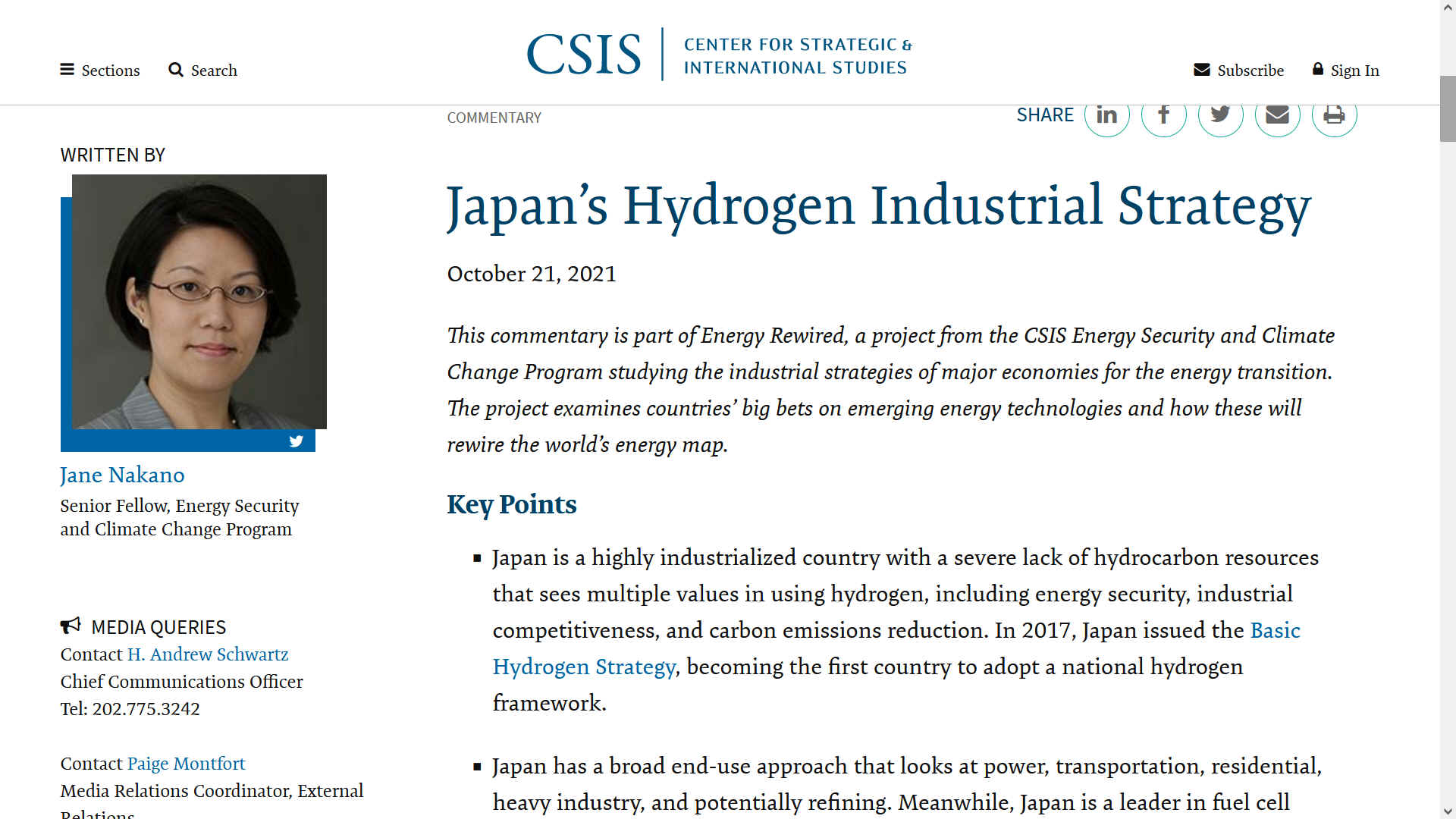
Japan is a highly industrialized country with a severe lack of hydrocarbon resources that sees multiple values in using hydrogen, including energy security, industrial competitiveness, and carbon emissions reduction. In 2017, Japan issued the Basic Hydrogen Strategy, becoming the first country to adopt a national hydrogen framework.
The
Japanese
prime minister Fumio Kishida is charged with failing to
protect life on
earth, as crimes against humanity and our ecology. On a more
positive note, many of Japan's car makers have invested in fuel
cell and hydrogen technology. The country has been looking at
importing bulk hydrogen via tankers.
Hence,
given a bit more support from other world leaders, we might reasonably
expect advances. But they cannot do it alone.
TOKYO
2nd November 2021 — Japanese Prime Minister Fumio Kishida is heading to the U.N. climate summit saying his country will push strongly for emissions reductions.
Talking to reporters before leaving for Glasgow on Tuesday, he said: “I hope to show to the international community Japan’s strong determination to achieve carbon neutrality (at home) by 2050 and realize zero emissions across Asia.”
The overseas trip is Kishida’s first since he took office a month ago.
Kishida is expected to outline Japan’s emissions reduction effort in his speech at the summit. Tokyo announced in April a target of 46% reduction by 2030 from fiscal 2013 levels to achieve
zero carbon emissions by 2050.
Kishida is also expected to hold talks with British Prime Minister
Boris Johnson and a few other leaders during his several-hour visit.
His trip comes just after a key parliamentary election in which his governing party and its coalition partner secured leadership.
The
wishes of the people are clear, clean up your countries, to save
life.

THE
DIRTIEST DOZEN
|
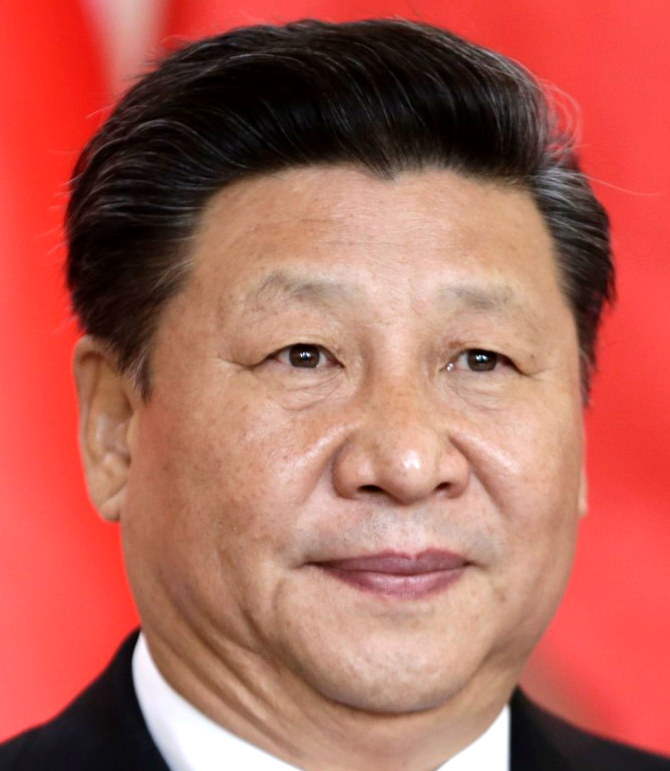
Chinese
President
Xi
Jinping
|

US
President
Joe
Biden
|

EU
President
Ursula
von der Leyen
|
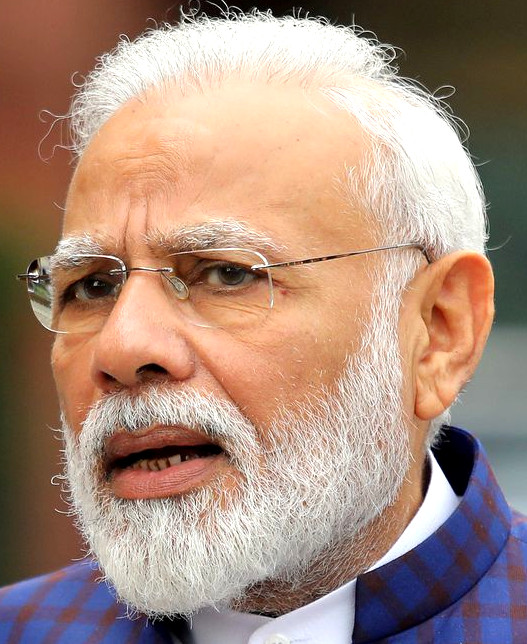
Indian
PM
Narendra
Modi
|
|

Vladimir
Putin
Russian
PM
|
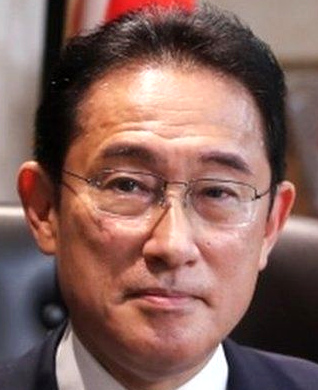
Japanese
PM
Fumio Kishida
|
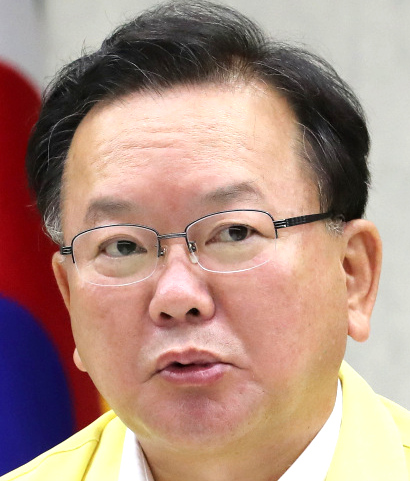
Kim
Boo-kuym
South
Korean PM
|

Mohammed bin Salman
Saudi
Arabian Ruler
|
|

Justin
Trudeau
Canadian
PM
|

Jair Bolsonaro
Brazilian
PM
|
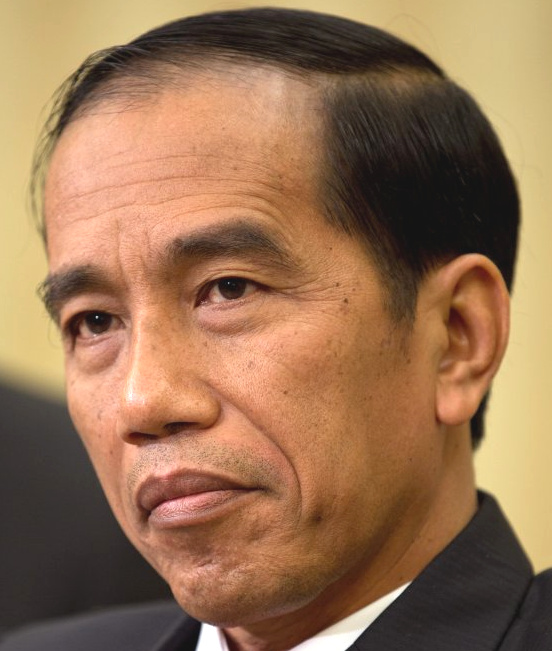
Joko Widodo
Indonesian
PM
|
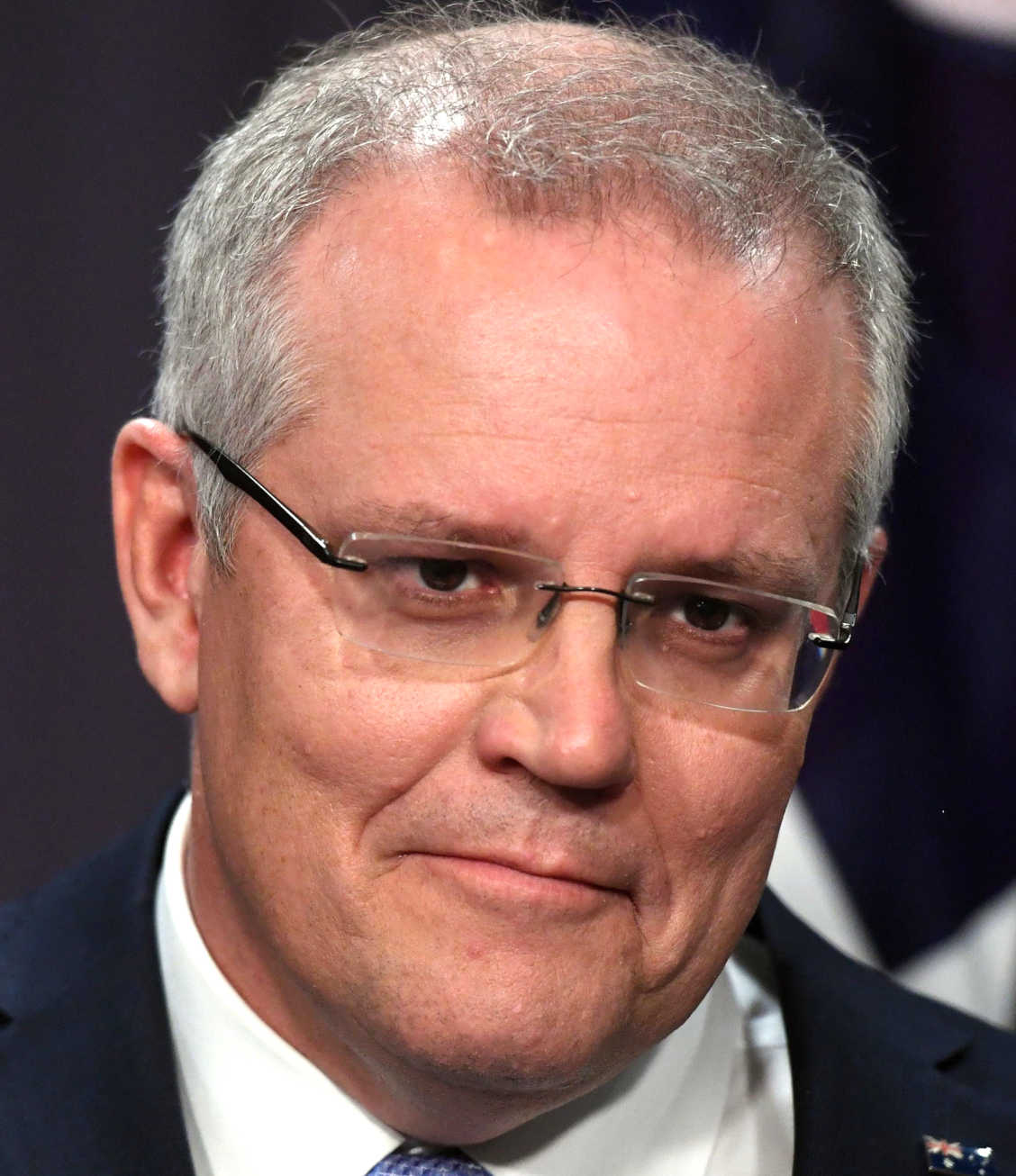
Scott
Morrison
Australian
PM
|
G20
abusers will say they had no choice. They needed to keep
burning coal, gas
and oil for their economies - just like the camp guards at the
many concentration camps, they were forced into business as
usual. In the case of the camp guards, they argued they were
just following orders. But that is not true. We all have
choices. There are clean alternatives, such as solar
and wind
power. There is no need to keep building coal
fired electricity
generating stations, and no need to drive carcinogenic petrol
or diesel vehicles that contribute
to lung
cancer. We have hydrogen
fuel
cells, electrolyzers
and zero
emission electric
vehicles.
If
you are going to increase electricity capacity, it makes sense
to invest in renewable
energy, unless it is that the fossil
fuel giants are lubricating the works with party donations.
If that is the case, we say that such contributions should be
transparently declared, that the public is informed as to what
is guiding policy decisions.


Adolf
Hitler and chum Heinrich Himmler [Allegedly,
Adolf Hitler did not die in that bunker incident C.1949.
Apparently, he was fired into England, strapped to a V1 rocket, leaving
behind his false teeth. He parachuted into Wealden that night
hoping to meet some deviants, who'd arranged a new identity for their
fallen comrade. Apparently, he landed in Crowborough,
in East Sussex, England, shaved off
his moustache and was mistaken for a council official, whereupon he
infiltrated the ranks of the local authority and trained them how to use his
terror tactics to control the peasant civilians. "Ve ist der master
race, unt ve vill enslave the council tax payers."
Not
the dirtiest, but in the top five ... but pretty stinky in the
short term, hoping for good things in the long run ... as soon
as they crunch the numbers - and then take into account the
morals, let alone the potential for criminal charges.
NAZI
LINKS
& REFERENCE
|

Adolf
Hitler
German
Chancellor
|

Herman
Goring
Reichsmarschall
Luftwaffe
|

Heinrich
Himmler
Reichsführer Schutzstaffel
|

Joseph
Goebbels
Reich Minister Propaganda
|
|

Philipp
Bouhler SS
NSDAP
Aktion T4
|

Dr
Josef Mengele
Physician
Auschwitz
|

Martin
Borman
Schutzstaffel
|

Adolph
Eichmann
Holocaust
Architect
|
|

Erwin
Rommel
The
Desert Fox
|

Rudolf
Hess
Auschwitz
Commandant
|

Karl
Donitz
Submarine
Commander
|

Albert
Speer
Nazi
Architect
|
A
Nazi war criminal
is a person who kills an unarmed human being or
gives the order to kill another human being outside the normal
rules of engagement in times of war.
In peacetime, a
Climate Change Criminal, is a politician,
industrialist or other entity that conducts
themselves and/or their policies such as to (in effect) murder
another human being from starvation or poisoning resulting from
action or inaction on their part, and including dumping plastic in
the sea to make fish
toxic.
This
philosophy extends to causing hardship and mental stress
(torture), contrary to
Articles 2 and 3 of the EU's Human Rights Convention and Articles
3 and 5
of the Universal Declaration of Human
Rights.



Nazi
concentration 'death camp' executions, quicker executions and
more brutal than climate genocide.
|

































